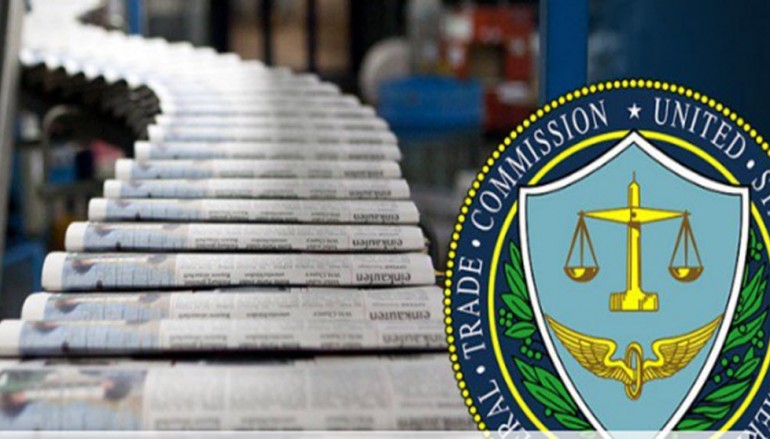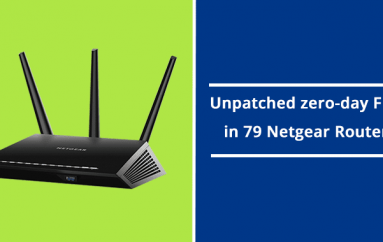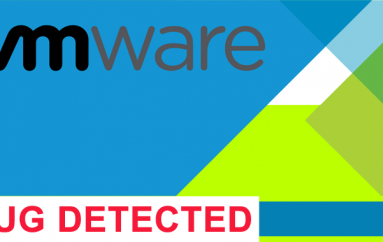
U.S. newspapers file FTC complaint against adblocking whitelist ‘racket’
Shortly before the Memorial Day weekend, the Newspaper Association of America filed a Complaint and Request for Investigation to the Federal Trade Commission regarding the ‘unfair and deceptive trade practices’ of Eyeo’s paid whitelisting for the AdBlock product.
The complaint [PDF], which represents the likes of The Washington Post along with 2000 other news outlets, describes adblocking technologies as ‘free-riding’ and a ‘clear and present danger’ to a ‘vibrant, content-filled Internet’.
However consumer opinions might be in contrast to that view of network-delivered ads, the complaint’s central contention is that adblocking technologies in general – and AdBlock Plus in particular – are cynically using popular take-up to generate an entirely new business model based on ‘middling’ – effectively running a protection racket wherein cash-rich publishing entities must pay to get their network ad content seen by default for the adblocking end-user.
Eyeo, the gatekeeper for the AdBlock Plus whitelist, argues that its Acceptable Ads scheme is an organic response to years of abuse from advertisers who have piled on intrusive and/or annoying ads into popular content because there was no way for the consumer to fight back or persuade companies to take a lower-key approach. The application form for the whitelist specifies that ads must have no animation, be ‘static’, preferably text-only, labelled clearly as ads and clearly separated from the content they are attached to.
Late in 2015, AdBlock plus became much more specific about its Acceptable Ads criteria, specifying acceptable placement parameters, context, and maximum heights and widths, among other details.
If you’re curious about which companies and domains have made it into the whitelist, you can view the entire exception list here, and the group discussions which lead to whitelist decisions here. ‘Small’ and ‘medium-sized’ blogs are not charged for whitelisting, though they need to submit their content in the same way.
Big enough to pay
Companies large enough to attract fees for whitelisting are those ‘that stand to gain more than 10 million incremental ad impressions per month because of whitelisting.’ [My link]
The whitelist linked above contains some of the highest traffic earners on the internet, including Perez Hilton, most of the Gawker network, USA Today, Business Insider, manybranches of the Fox news network…it is a formidable list of publications which certainly fall outside the ‘small’ or ‘medium’ category. The Washington Post is in there, presumably having paid, and then repented of the acquiescence. All publications from my former employer, Dennis Publishing, are in there. In fact the entire mainstream publishing world seems to be in there; the plain text file which represents the list weighs in at 1.8mb – quite a size for a document of that nature.
AdBlock Plus does not disclose the amount of payments it receives for whitelisting concerns which fall into a chargeable bracket. The NAA complaint argues that Eyeo’s ‘business model’ is spreading, and indeed, it does seem to be.
My take on this dispute is that both parties are in the wrong; the online advertising industry would love to put the genie back in the bottle and run autoplay video to the heart’s content of its clients; whilst Eyeo is, yes, corruptly turning a populist grass-roots tech trend into a form of racketeering.
The specious paywall-avoidance argument
An additional contention which the NAA forward in the complaint is that adblockers facilitate the avoidance of paywalls or metered services:
‘By permitting users to evade metered subscription services and paywalls, ad-blockers are engaging in an unfair method of competition under Section 5 of the FTC Act that directly harms consumers and publishers.’
It is certainly possible to use AdBlock Plus to bypass paywalls; however it is not a well-publicised or even central feature of the plugin, but rather the result of publishing companies’ need to present complete content to Google but restricted content to the average end-user. Publishing concerns such as the FT, which genuinely hide core content behind the need to subscribe and log in, are not affected by such tricks – but neither is their content free to flourish organically on the internet via Google and social networks. There are not many outlets with adequate cachet and subscribers to eschew popular sharing in this way.
However, the NAA is stretching its argument perilously thin in this part of the complaint.
Elsewhere the NAA filing to the FTC laments the substitution of AdBlock Plus’s own (presumably ‘acceptable’) ads shown in lieu of the intended ad placement, as ‘misleading’, on the presumption that end-users will believe that the switched-out publications support, condone or have actively placed ads which it has no knowledge of.
This does seem to have some traction. MitM ad-injection is controversial enough without systematising it. What AdBlock/Eyeo deem ‘acceptable’ could be argued as damaging to the reputation of the ‘ad-substituted’ publisher, who had no opportunity to vet the replacement ads.
No clear heroes remaining
This complaint from the NAA has some legitimate points to make, but damages itself by attempting to exceed valid grievances by pretending that AdBlock users are avidly avoiding paywalls with the software, when most do not have the technical acumen to make AdBlock perform this trick for even one site, never mind multiple sites which continually update the code to avoid this kind of pattern detection.
In any case, the problem here is one of commitment, and publishers fond of viral traffic must either accept the openness of their content or commit to occlusion as the FT has.
However, in my opinion no external party has the right to associate a publication with entities it has not approved by substituting unknown ads in that publication, which both co-opts the publisher’s influence for a third-party’s gain and potentially stains its brand without any fault on the publisher’s part.
But so long as the likes of Randall Rothenburg continue to spit bile against the very concept of adblocking, to only pay lip-service to the idea of making some real contrition for a decade or more of bandwidth-hogging, CPU-burning, malware-spreading and JavaScript-ridden ads, and to even hide the former sins of IAB behind the human rights convention (see link above), both publishers and the online ad industry can only be considered to have opened up the path for the supposed gangsters who are now hustling them.
It would be interesting to know what has prompted The Washington Post and all the other outlets to gather at the FTC in this manner, since, as far as I can tell, most of them have paid Eyeo to be whitelisted. A price hike for the ‘protection’?
Source | TheStack





